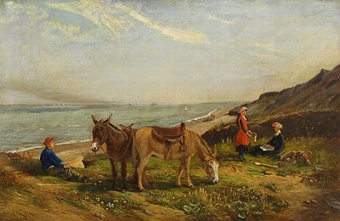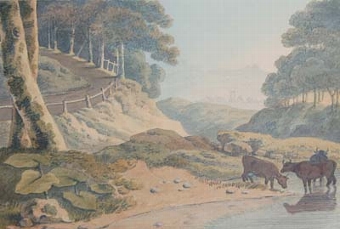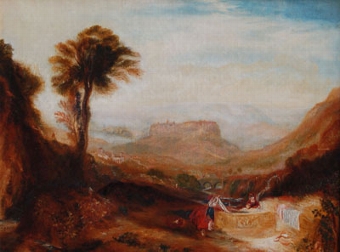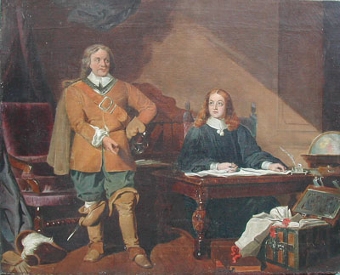Armstrong was born August 4, 1901 to a poor family in New Orleans, Louisiana. His youth was spent in poverty in a rough neighborhood of uptown New Orleans, as his father, William Armstrong (1881??), abandoned the family when Louis was an infant. His mother, Mary Albert Armstrong (1886?1942) then left him and his younger sister Beatrice Armstrong Collins (1903?1987) under the upbringing of his grandmother Josephine Armstrong. He first learned to play the cornet (his first of which was bought with money loaned to him by the Karnofskys, a Russian-Jewish immigrant family) in the band of the New Orleans Home for Colored Waifs, where he had been sent multiple times for general delinquency, most notably for a long term after (as police records show) firing his father''s pistol into the air at a New Year''s Eve celebration. He followed the city''s frequent brass band parades and listened to older musicians every chance he got, learning from Bunk Johnson, Buddy Petit, and above all Joe "King" Oliver, who acted as a mentor and almost a father figure to the young Armstrong. Armstrong later played in the brass bands and riverboats of New Orleans, and first started traveling with the well-regarded band of Fate Marable which toured on a steamboat up and down the Mississippi River; he described his time with Marable as "going to the University" since it gave him a much wider experience working with written arrangements. When Joe Oliver left town in 1919, Armstrong took Oliver''s place in Kid Ory''s band, regarded as the top hot jazz band in the city.
On March 19, 1918 Louis wed Daisy Parker, a prostitute from Gretna, Louisiana and then adopted a 3-year-old son Clarence Armstrong (1914?1998) whose mother, Louis''s cousin Fiona, died soon after birth. In 1922 Armstrong joined the exodus to Chicago, where he had been invited by Joe "King" Oliver to join his Creole Jazz Band. Oliver''s band was the best and most influential hot jazz band in Chicago in the early 1920s, at a time when Chicago was the center of jazz. Armstrong made his first recordings, including taking some solos and breaks, while playing second cornet in Oliver''s band in 1923.
Armstrong was happy working with Oliver, but his wife, pianist Lil Hardin Armstrong, urged him to seek more prominent billing. He and Oliver parted amicably in 1924 and Armstrong moved to New York City to play with the Fletcher Henderson Orchestra, the top African American band of the day. Armstrong switched to the trumpet to blend in better with the other musicians in his section. His influence upon Henderson''s tenor sax soloist, Coleman Hawkins, can be judged by listening to the records that the band made during this period. During this time, he also made many recordings on the side arranged by an old friend from New Orleans, pianist Clarence Williams; these included small jazz band sides (some of the best pairing Armstrong with one of Armstrong''s few rivals in fiery technique and ideas, Sidney Bechet) and a series of accompaniments for Blues singers.
He returned to Chicago in 1925 and began recording under his own name with his famous Hot Five and Hot Seven with such hits as "Potato Head Blues", "Muggles" (a reference to marijuana, for which Armstrong had a lifelong fondness), and "West End Blues", the music of which set the standard and the agenda for jazz for many years to come. His recordings with Earl "Fatha" Hines (most famously their 1928 "Weatherbird" duet) and Armstrong''s trumpet introduction to "West End Blues" remain some of the most famous and influential improvisations in jazz history.
Armstrong returned to New York in 1929, then moved to Los Angeles in 1930, then toured Europe. After spending many years on the road, he settled permanently in Queens, New York in 1943. Although subject to the vicissitudes of Tin Pan Alley and the gangster-ridden music business, he continued to develop his playing.
During the subsequent thirty years, Armstrong played more than three hundred gigs a year. Bookings for big bands tapered off during the 1940''s due to changes in public tastes: ballrooms closed, and there was competition from television and from other types of music becoming more popular than big band music. It became impossible to support and finance a 16-piece touring band.
Following a highly successful small-group jazz concert at New York Town Hall on May 17, 1947, featuring Armstrong with Jack Teagarden, Armstrong''s manager, Joe Glaser, dissolved the Armstrong big band on August 13, 1947 and established a six-piece small group featuring Armstrong with Teagarden, Earl Hines and other top swing and dixieland musicians. The new group was announced at the opening of Billy Berg''s Supper Club.
This group was called the All Stars, and included at various times Barney Bigard, Edmond Hall, Jack Teagarden, Trummy Young, Arvell Shaw, Billy Kyle, Marty Napoleon, Big Sid Catlett, Cozy Cole and Barrett Deems. During this period, Armstrong made many recordings and appeared in over thirty films. In 1964, he recorded his biggest-selling record, Hello, Dolly!. The song went to #1 on the pop chart, making Armstrong the oldest person to ever accomplish that feat at age 63.
Armstrong kept up his busy tour schedule until a few years before his death. While in his later years, he would sometimes play some of his numerous gigs by rote, but other times would enliven the most mundane gig with his vigorous playing, often to the astonishment of his band. He also toured Africa, Europe, and Asia under sponsorship of the US State Department with great success and become known as "Ambassador Satch". While failing health restricted his schedule in his last years, within those limitations he continued playing until the day he died.
Armstrong died of a heart attack in 1971 at age 69, the night after playing a famous show at the Waldorf Astoria''s Empire Room. He was interred in Flushing Cemetery, Flushing, in Queens, New York City.
The nickname Satchmo or Satch is short for Satchelmouth (describing his embouchure). In 1932, then Melody Maker magazine editor Percy Brooks greeted Armstrong in London with "Hello, Satchmo!" shortening Satchelmouth (some say unintentionally), and it stuck.
Early on he was also known as Dippermouth. This is a reference to the propensity he had for refreshing himself with the dipper (ladle) from a bucket of sugar water (literally) always present on stage with Joe Oliver''s band in Chicago in the early nineteen-twenties.
The damage to his embouchure from his high pressure approach to playing is acutely visible in many pictures of Louis from the mid-twenties. It also led to his emphasizing his singing career because at certain periods, he was unable to play. This did not stop Louis though, because after setting his trumpet aside for a while, he amended his playing style and continued his trumpet career. Friends and fellow musicians usually called him Pops, which is also how Armstrong usually addressed his friends and fellow musicians (except for Pops Foster, whom Armstrong always called "George").
Satchmo''s autograph from the 1960sThe "Satchmo" nickname and Armstrong''s warm Southern personality, combined with his natural love of entertaining and evoking a response from the audience, resulted in a public persona ? the grin, the sweat, the handkerchief ? that came to seem affected and even something of a racist caricature late in his career.
He was also criticized for accepting the title of "King of The Zulus" (in the New Orleans African American community an honored role as head of leading black Carnival Krewe, but bewildering or offensive to outsiders with their traditional costume of grass-skirts and blackface makeup satirizing southern white attitudes) for Mardi Gras 1949.
The seeming racial insensitivity of Armstrong''s King of the Zulus performance has sometimes been seen as part of a larger failing on Armstrong''s part. Where some saw a gregarious and outgoing personality, others saw someone trying too hard to appeal to white audiences and essentially becoming a minstrel caricature. Some musicians criticized Armstrong for playing in front of segregated audiences, and for not taking a strong enough stand in the civil rights movement suggesting that he was an Uncle Tom. Billie Holiday countered, however, "Of course Pops toms, but he toms from the heart."
Armstrong in fact was a major financial supporter of Dr. Martin Luther King Jr. and other civil rights activists, but mostly preferred to work quietly behind the scenes, not mixing his politics with his work as an entertainer. The few exceptions made it more effective when he did speak out; Armstrong''s criticism of President Eisenhower, calling him "two-faced" and "gutless" because of his inaction during the conflict over school desegregation in Little Rock, Arkansas in 1957 made national news. As a protest, Armstrong cancelled a planned tour of the Soviet Union on behalf of the State Department saying "The way they''re treating my people in the South, the government can go to hell" and that he could not represent his government abroad when it was in conflict with its own people.
He was an extremely generous man who was said to have given away almost as much money as he kept for himself. Armstrong was also greatly concerned with his health and bodily functions. He made frequent use of laxatives as a means of controlling his weight, a practice he advocated both to personal acquaintances and in the diet plans he published under the title Lose Weight the Satchmo Way. Armstrong''s laxative of preference in his younger days was Pluto Water, but then became an enthusiastic convert when he discovered the herbal remedy Swiss Kriss; he would extol its virtues to anyone who would listen.
In his early years, Armstrong was best known for his virtuosity with the cornet and trumpet. The greatest trumpet playing of his early years can be heard on his Hot Five and Hot Seven records. The improvisations which he made on these records of New Orleans jazz standards and popular songs of the day, to the present time stack up brilliantly alongside those of any other later jazz performer. The older generation of New Orleans jazz musicians often referred to their improvisations as "variating the melody"; Armstrong''s improvisations were daring and sophisticated for the time while often subtle and melodic. He often essentially re-composed pop-tunes he played, making them more interesting. Armstrong''s playing is filled with joyous, inspired original melodies, creative leaps, and subtle relaxed or driving rhythms. The genius of these creative passages is matched by Armstrong''s playing technique, honed by constant practice, which extended the range, tone and capabilities of the trumpet. In these records, Armstrong almost single-handedly created the role of the jazz soloist, taking what was essentially a collective folk music and turning it into an art form with tremendous possibilities for individual expression.
Louis ArmstrongArmstrong''s work in the 1920s shows him playing at the outer limits of his abilities. The Hot 5 records, especially, often have minor flubs and missed notes, which do little to detract from listening enjoyment since the energy of the spontaneous performance comes through. By the mid 1930s Armstrong achieved a smooth assurance, knowing exactly what he could do and carrying out his ideas with perfectionism.
As his music progressed and popularity grew, his singing also became important. Armstrong was not the first to record scat singing, but he was masterful at it and helped popularize it. He had a hit with his playing and scat singing on "Heebie Jeebies", and sang out "I done forgot the words" in the middle of recording "I''m A Ding Dong Daddy From Dumas". Such records were hits and scat singing became a major part of his performances. Long before this, however, Armstrong was playing around with his vocals, shortening and lengthening phrases, interjecting improvisations, using his voice as creatively as his trumpet.
During his long career he played and sang with the most important instrumentalists and vocalists; among the many, singing brakeman Jimmie Rodgers, Bing Crosby, Duke Ellington, Fletcher Henderson, Bessie Smith, and notably with Ella Fitzgerald. His influence upon Bing Crosby is particularly important with regard to the subsequent development of popular music: Crosby admired and copied Armstrong, as is evident on many of his early recordings, notably "Just One More Chance" (1931). The ''New Grove Dictionary Of Jazz'' describes Crosby''s debt to Armstrong in perfect detail, although it does not acknowledge Armstrong by name: "Crosby...was important in introducing into the mainstream of popular singing an Afro-American concept of song as a lyrical extension of speech...His techniques - easing the weight of the breath on the vocal chords, passing into a head voice at a low register, using forward production to aid distinct enunciation, singing on consonants (a practice of black singers), and making discreet use of appoggiaturas, mordents, and slurs to emphasise the text - were emulated by nearly all later popular singers". Armstrong recorded three albums with Ella Fitzgerald: Ella and Louis, Ella and Louis Again, and Porgy and Bess for Verve Records. His recordings Satch Plays Fats, all Fats Waller tunes, and Louis Armstrong Plays W.C. Handy in the 1950s were perhaps the last of his great creative recordings, but even oddities like Disney Songs the Satchmo Way have their musical moments. For the most part, however, his later output was criticized as being overly simplistic or repetitive.
Armstrong had many hit records including "Stardust", "What a Wonderful World", "When The Saints Go Marching In", "Dream a Little Dream of Me", "Ain''t Misbehavin''", and "Stompin'' at the Savoy". "We Have All the Time in the World" featured on the soundtrack of the James Bond film On Her Majesty''s Secret Service, and enjoyed renewed popularity in the UK in 1994 when it featured on a Guinness advert. It reached number 3 in the charts on being re-released.
In 1964, Armstrong knocked the Beatles off the top of the Billboard Top 100 chart with "Hello, Dolly", which gave the 63-year-old performer a U.S. record as the oldest artist to have a #1 song. In 1968, Armstrong scored one last popular hit in the United Kingdom with the highly sentimental pop song "What a Wonderful World", which topped the British charts for a month; however, the single did not chart at all in America. The song gained greater currency in the popular consciousness when it was used in the 1987 movie Good Morning Vietnam, its subsequent rerelease topping many charts around the world.
Armstrong enjoyed many types of music, from the most earthy blues to the syrupy sweet arrangements of Guy Lombardo, to Latin American folksongs, to classical symphonies and opera. Armstrong incorporated influences from all these sources into his performances, sometimes to the bewilderment of fans who wanted Armstrong to stay in convenient narrow categories. Armstrong was inducted into Rock and Roll Hall of Fame as an early influence. Some of his solos from the 1950s, such as the hard rocking version of "Saint Louis Blues" from the WC Handy album, show that the influence went in both directions.
Philippe Halsman portrait of Armstrong on cover of Life Magazine, 1966Louis Armstrong died of a heart attack on July 6, 1971, at age 69. He was residing in Corona, Queens, New York City, at the time of his passing.
The influence of Armstrong on the development of jazz is virtually immeasurable. Yet, his irrepressible personality both as a performer, and as a public figure later in his career, was so strong that to some it sometimes overshadowed his contributions as a musician and singer.
As a virtuoso trumpet player, Armstrong had a unique tone and an extraordinary talent for melodic improvisation. Through his playing, the trumpet emerged as a solo instrument in jazz. He was a masterful accompanist and ensemble player in addition to his extraordinary skills as a soloist. With his innovations, he raised the bar musically for all who came after him.
Armstrong is considered to have essentially invented jazz singing. He had an extremely distinctive gravelly voice, which he deployed with great dexterity as an improviser, bending the lyrics and melody of a song for expressive purposes. He was also greatly skilled at scat singing, or wordless vocalizing, and according to some legends he invented it, during his recording "Heebie Jeebies" where the sheet music fell on the floor and he simply started singing nonsense syllables. Billie Holiday and Frank Sinatra are just two singers who were indebted to him.
Armstrong appeared in more than a dozen Hollywood films (though few of particular note), usually playing a band leader or musician. He was the first African American to host a nationally broadcast radio show in the 1930s. He also made assorted television appearances, especially in the 1950s and 1960s, including appearances on The Tonight Show Starring Johnny Carson. Louis Armstrong has a record star on the Hollywood Walk of Fame on 7601 Hollywood Boulevard.
Many of Armstrong''s recordings remain popular. More than three decades since his passing, a larger number of his recordings from all periods of his career are more widely available than at any time during his lifetime. His songs are broadcast and listened to every day throughout the world, and are honored in various movies, TV series, commercials, and even anime and computer games. "A Kiss to Build a Dream On" was included in the computer game Fallout 2, accompanying the intro cinematic. His 1923 recordings with Joe Oliver and his Creole Jazz Band continue to be listened to as documents of ensemble style New Orleans jazz, but more particularly as ripper jazz records in their own right. All too often, however, Armstrong recorded with stiff, standard orchestras leaving only his sublime trumpet playing as of interest. "Melancholy Blues," performed by Armstrong and his Hot Seven was included on the Voyager Golden Record sent into outer space to represent one of the greatest achievements of humanity.
Armstrong set up a non-profit foundation for educating disadvantaged children in music, and bequeathed his house and substantial archives of writings, books, recordings, and memorabilia to the City University of New York''s Queens College, to take effect after his and his wife Lucille''s death. The Louis Armstrong archives have been available to music researchers, and his home at 34-56 107th Street (between 34th and 35th Avenues), was opened to the public as a museum on October 15, 2003.
Argentine writer Julio Cort?zar, a self-described Armstrong admirer, asserted that a 1952 Louis Armstrong concert at the Th??tre des Champs-?lys?es in Paris played a significant role in inspiring him to create the fictional creatures called Cronopios that are the subject of a number of Cort?zar''s short stories. Cort?zar onced called Louis Armstrong himself "Grand?simo Cronopio" (Most Enormous Cronopio).
The main airport in New Orleans, Louis Armstrong New Orleans International Airport is named for Armstrong.
JULIET PANNETT began her career as an artist so long ago that she was able to draw a veteran of the Crimean War, William Brazier, who had been present at the fall of Sebastopol. And as he sat up in bed, wearing his medals, the 99-year-old smiled at the young artist and said: ?You?re a beauty?. Her sympathetic portrait was just one of thousands of rather old-fashioned likenesses that she produced in a career of more than 75 years.
Later Pannett had her own seat for six years in the House of Commons gallery, from which, long before the chamber was televised, she sketched the proceedings for The Illustrated London News. From there, in 1964, she drew a sadly emaciated and stooped Winston Churchill leaving the House for the last time. Over the years she produced portraits of eight other prime ministers.
Her work was reproduced regularly in The Times, The Daily Telegraph and Radio Times, and for a long period her drawings appeared on the cover of The Law Guardian. Her subjects ranged from royalty through the ranks of the musical, military, academic and medical professions.
Juliet Kathleen Somers was born in Hove in 1911, the fifth of seven children of a not-very-successful professional gambler. From a very early age she was determined to become an artist, and at 16 she enrolled at Brighton Art School. By the time she was 18, her drawings of local characters and sportsmen were appearing in local papers and magazines. These and her landscape paintings provided a modest living until her marriage in 1938 to Captain Maurice Pannett of The Devonshire Regiment.
Over the next few years she had two children, and after the war the family moved to Gloucestershire, where her husband took a teaching post in a prep school. In 1949 they moved again, to Croydon. As there was no money for a car, the garage was soon converted into a studio, and Pannett resumed her career and produced a series of drawings for the Croydon Advertiser.
Through the Fifties she would often carry her heavy sketching bag the mile or so to East Croydon station to catch a train to London to work on portraits or in situ drawings. She exhibited widely (which meant lugging framed pictures to galleries) and would often take her work to newspapers on spec when one of her sitters was in the news. On top of this, she took in paying guests from overseas to help the family budget.
Perseverance was rewarded with several adventurous assignments. When Qantas made its inaugural jet flight to Australia, Pannett was invited along to produce paintings of the various stops along the way, which were then reproduced in The Illustrated London News. Similarly, she was on the inaugural flights to Canada with Trans Canada Airlines and to Israel with El Al.
In 1964 the family moved to Angmering, West Sussex, where Pannett entertained many sitters in a new spacious studio. Even more spacious were the open-air studios of local farms, harbours and countryside where, each summer from 1973 to 1992, Pannett ran watercolour painting classes with her sister Phoebe and her son. Several of their complete beginners went on to become serious artists. Pannett also taught art on many P&O cruises, assisted by her husband.
After a commission in 1963 from The Devon and Dorset Regiment for a portrait of its colonel-in-chief, Princess Marina, Duchess of Kent, Pannett painted other royal portraits in the 1970s for presentation to the Queen: Prince Andrew, a commission from the Painter Stainers Company, and Prince Edward, a commission from the Royal Household. In 1989 the Chartered Insurance Institute commissioned a large oil portrait of the Queen herself, for its office in the City. When the Duke of Edinburgh saw it, he commissioned a further pastel drawing of the Queen for presentation to the island of Malta.
In 1985 Pannett was one of nine members of her family, from three generations, to feature in a special exhibition at the Arun Art Centre, Arundel, where the work ranged from portraiture to pottery and plastic sculpture.
Her last major portrait was of General Sir John Wilsey, Colonel of the Devon and Dorsets, which was painted for the regiment in 1998. Her eyesight was by then failing, so the details of the uniform and medals were finished by her son.
Twelve of her drawings were shown at the National Portrait Gallery in a special six-month exhibition from last December. Despite poor health, she attended the opening and enjoyed the celebration of being the gallery?s oldest living artist.
She was a member of the Society of Graphic Artists and the Pastel Society, and was a Fellow of the Royal Society of Arts. She was also an Honorary Freeman of the Worshipful Company of Painter Stainers, whose gold medal she won in 1995. She was appointed MBE in 1991.
Her husband died in 1980. She is survived by her son, Denis, and daughter Liz, both of whom are also artists.
Antiques.co.uk Ref: DP68RREY
- Materials:
- Charcoal on Paper
- Width (cm):
- 45.72 x 30.48 (18.00 x 12.00 ins)












